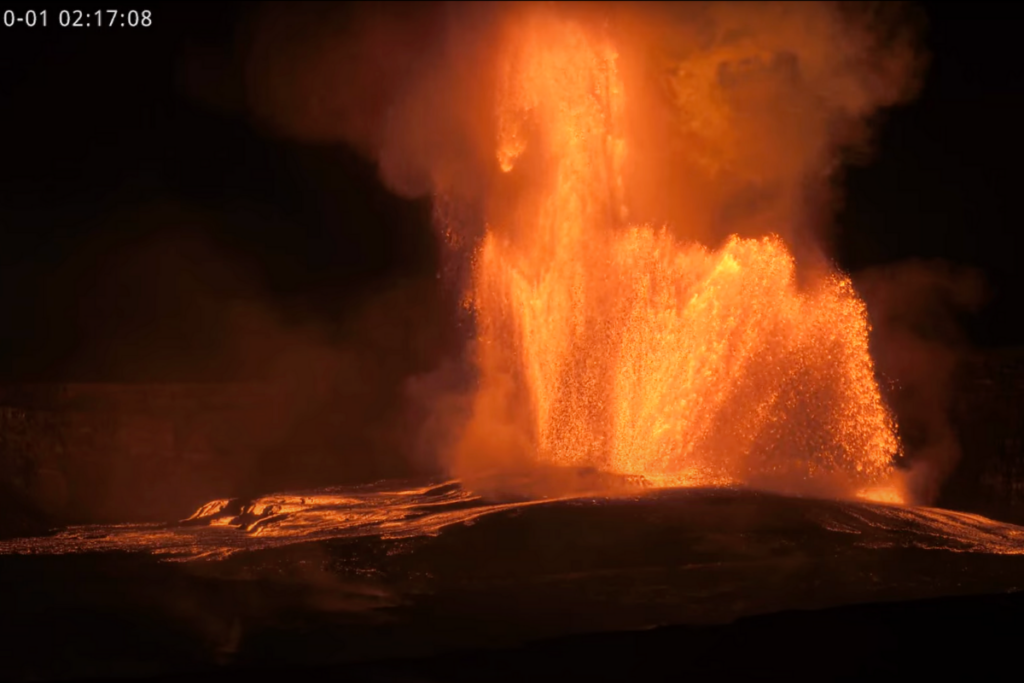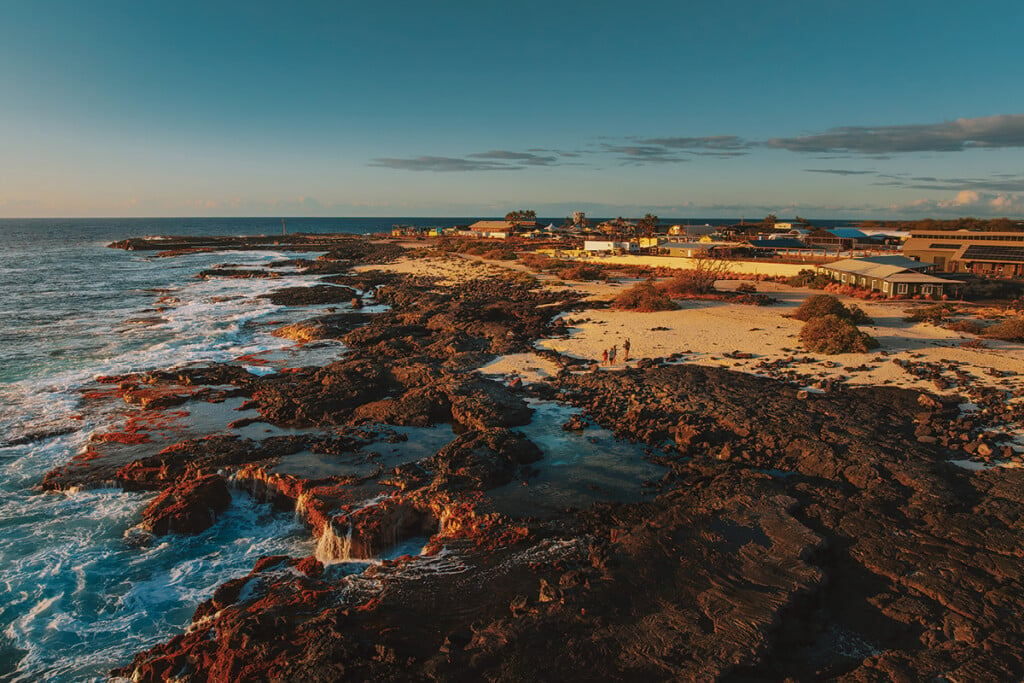Towering 1,300-Foot Lava Fountains Mark Episode 34 of Kīlauea’s Ongoing Eruption
Episode 34 began in the early hours of Oct. 1 and ended after 6 hours of continuous fountaining.

Kīlauea continues to keep the world enthralled with its epic eruption in Halemaʻumaʻu Crater, which started on Dec. 23, 2024.
Ten months later, the volcano remains active and mesmerizing. On Oct. 1, 2025, episode 34 began at 12:53 a.m. HST. According to the Hawaiian Volcano Observatory, lava fountains soared to an estimated 1,300 feet. By 7:03 a.m. HST, the episode ended after 6 hours of continuous fountaining.
Kīlauea is a shield volcano located on the eastern slopes of Hawaiʻi Island. It’s considered one of the world’s most active volcanoes. Travelers from near and far continue to flock to Hawaiʻi Volcanoes National Park hoping to witness the natural phenomenon.

Kīlauea continues to keep the world enthralled with its epic eruption in Halemaʻumaʻu Crater.
Photo: Screenshot of U.S. Geological Survey’s livestream
While witnessing the eruption is spectacular, Kīlauea is infamous for its destructive past. According to the U.S. Geological Survey, scientists estimate the volcano has experienced two long periods of sporadic, violent eruptions over the past 2,500 years—one lasting 1,200 years, ending in about 1000 CE; the other lasted roughly 300 years, between 1500 and 1800.
Since 1952, the volcano has erupted dozens of times. In 1959, the short-lived Kīlauea Iki eruption produced lava fountains that reached heights of 1,050 feet. The eruption that created Puʻu ʻŌʻō, a volcanic cone on the eastern rift zone of Kīlauea, began on Jan. 3, 1983, and continued until April 30, 2018. This was the longest and most voluminous known outpouring of lava from Kīlauea’s east rift zone in more than 500 years.
In June 2024, Kīlauea’s Southwest Rift Zone erupted—the first time in nearly 50 years. The short-lived event produced lava fountains. A separate eruption occurred at Nāpau Crater in the middle Rift Zone in September 2024, which lasted multiple days.

Visitors watch episode 33 of Kīlauea’s eruption in Hawaiʻi Volcanoes National Park.
Photo: NPS Photo/J.Wei
If you’re planning to visit Hawaiʻi Volcanoes National Park to witness the eruption, here’s some helpful tips from the park.
Tips for Visiting Hawaiʻi Volcanoes National Park:
- One of the best ways to track Kīlauea’s activity is to sign up for email alerts from the USGS Hawaiian Volcano Observatory. To sign up, visit volcanoes.usgs.gov/vns.
- Many of Kīlauea’s episodes last about 12 hours. As soon as you get an alert, you’ll want to head to the park. The eruption could end within hours.
- The best viewing points to see Kīlauea’s eruption are along Crater Rim Trail and Uēkahuna, the summit region of the volcano.
- The park highly recommends first-timers and those who haven’t visited in a while to make the Welcome Center their first stop. The park staff are available from 9 a.m. to 4:45 p.m. However, the park is open 24 hours. If you visit the park before or after hours, the Welcome Center is still a great spot with ample parking.
- An eruption is especially dramatic at night. If you’re visiting the park in the evening, bring a flashlight or headlamp. It’s recommended to bring a jacket, dress in long pants and wear closed-toe shoes. The summit can be chilly and rainy.
- Remember to leave no trace and don’t approach wildlife like nēnē.
- Be respectful and give others space to conduct their cultural practices.
Be Aware of Potential Hazards:
Volcanoes can pose serious hazards and Kīlauea’s eruption is in an area that has been closed to the public since 2007 due to unstable cliffs, toxic volcanic gas and dangerous terrain.
Serious hazards to be aware of:
- Exposure to volcanic gas and tephra like Pele’s hair and volcanic ash presents a danger to everyone, especially for people with heart or respiratory problems, infants, young children and pregnant women. For more information on air quality visit nps.gov/havo/air-quality-alert.htm. Face masks do not protect against volcanic gas or fine particulate matter.
- Unstable cliff edges, Earth cracks or other hazards which may not be visible can cause serious injuries. Be sure to stay on marked trails and overlooks.
- When driving, slow down and watch for pedestrians, wildlife and other motorists. During eruptions, expect crowds, congestion and limited parking.

